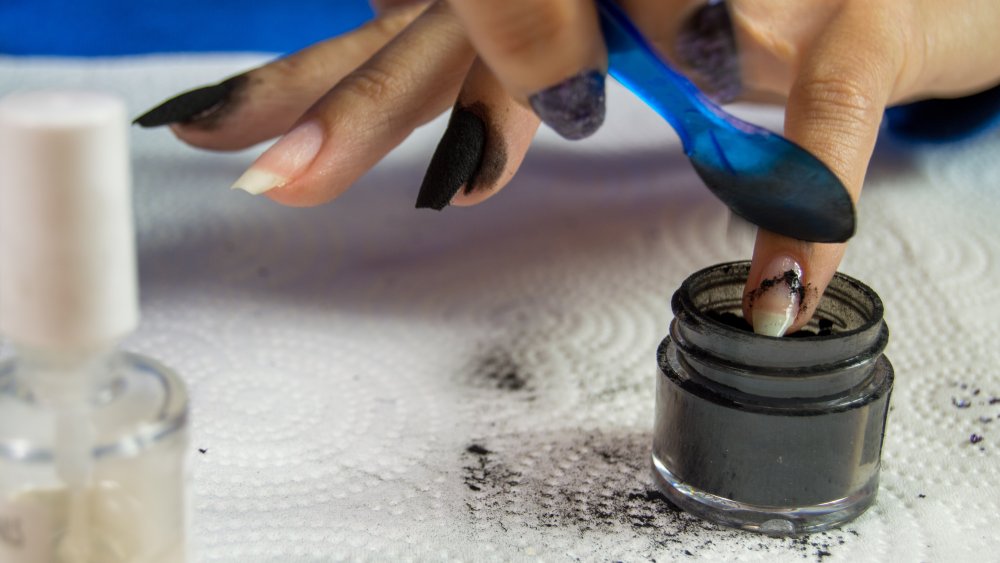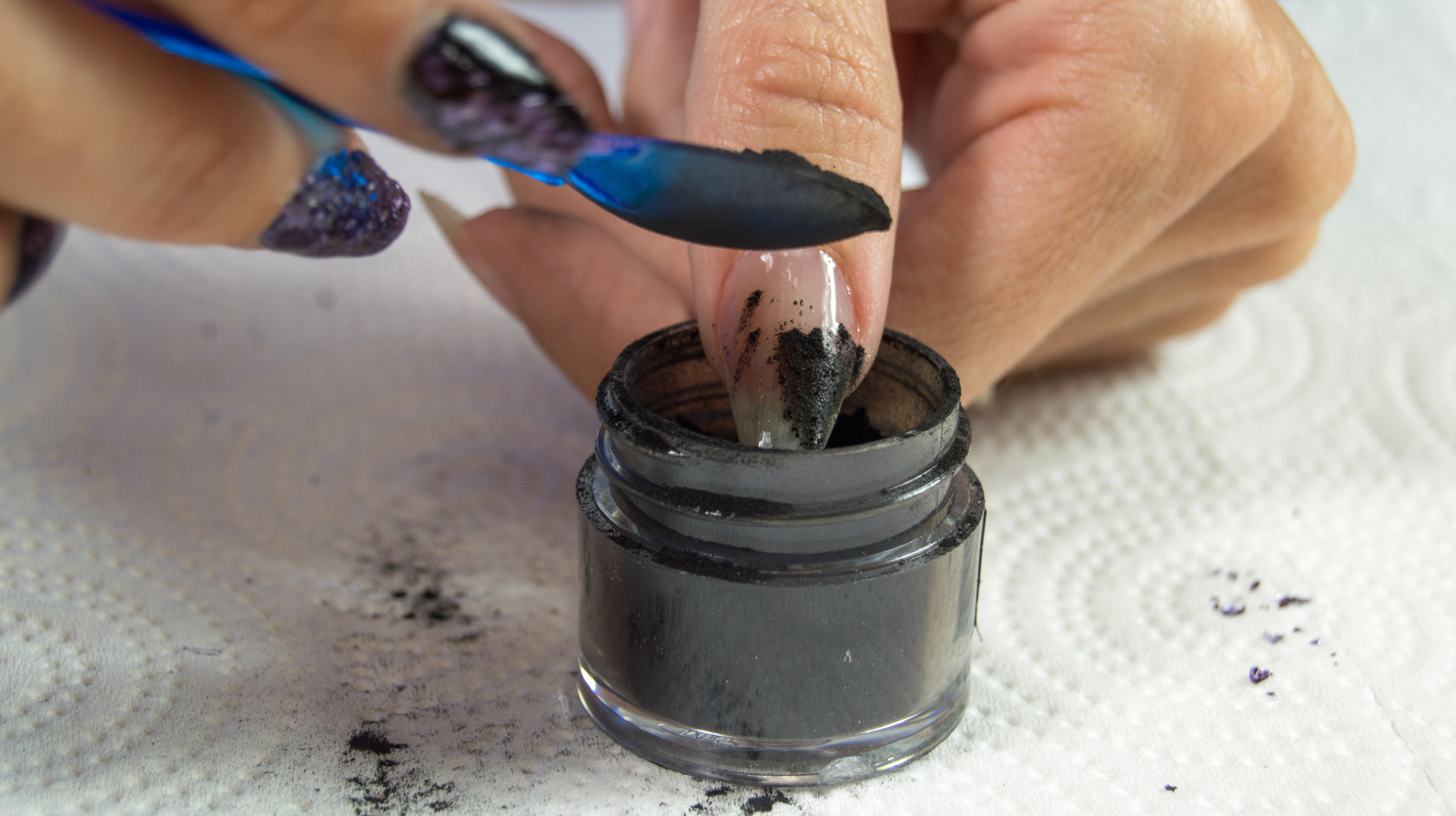Bad dip nails is a common concern for many people who love enhancing their nail appearance with dip powder. While dip powder nails are known for their durability and vibrant colors, improper application or aftercare can lead to unpleasant issues such as bad dip nails. If you've experienced discoloration, chipping, or irritation, you're not alone. This article will explore everything you need to know about bad dip nails, including causes, solutions, and prevention tips.
Whether you're a seasoned dip powder user or new to the world of nail enhancements, understanding the potential pitfalls is essential. This guide aims to provide actionable advice to help you maintain healthy and beautiful nails while avoiding common problems associated with dip powder.
By the end of this article, you'll have a clearer understanding of what causes bad dip nails, how to prevent it, and how to treat it if it happens. Let's dive in!
Read also:Ashley Madison Customers List The Controversial Data Breach And Its Implications
Table of Contents
- What Are Bad Dip Nails?
- Causes of Bad Dip Nails
- Signs and Symptoms of Bad Dip Nails
- Prevention Tips for Bad Dip Nails
- Treatment Options for Bad Dip Nails
- Biological Effects of Dip Powder
- Common Mistakes in Dip Nail Application
- Professional vs. At-Home Dip Nail Application
- Alternatives to Dip Nails
- Expert Advice on Dip Nails
What Are Bad Dip Nails?
Dip powder nails have become increasingly popular due to their long-lasting finish and ease of application. However, bad dip nails refer to the negative outcomes that can occur when the process is not done correctly. This includes issues such as discoloration, uneven application, or irritation. These problems can arise from poor quality products, improper application techniques, or inadequate aftercare.
Bad dip nails can not only ruin the appearance of your manicure but also lead to discomfort and even nail damage if left untreated. Understanding the root causes and learning how to prevent these issues is crucial for maintaining healthy nails.
Causes of Bad Dip Nails
Improper Product Usage
One of the primary reasons for bad dip nails is the use of low-quality or outdated products. If the dip powder or bonding agents are expired or contaminated, they can cause uneven application and discoloration. Always ensure that you're using fresh, high-quality products to achieve the best results.
Inadequate Preparation
Proper nail preparation is essential for a successful dip powder application. Skipping steps like filing the nails, cleaning them thoroughly, or applying a primer can lead to bad dip nails. Each step plays a vital role in ensuring the powder adheres correctly and lasts longer.
Incorrect Application Techniques
Applying dip powder incorrectly can result in bad dip nails. For instance, applying too much powder or not buffing it properly can cause bumps and an uneven surface. It's important to follow the manufacturer's instructions carefully and practice proper techniques to avoid these issues.
Signs and Symptoms of Bad Dip Nails
Recognizing the signs of bad dip nails early can help you address the problem before it worsens. Some common symptoms include:
Read also:Bust Support Swimsuit The Ultimate Guide To Finding The Perfect Fit
- Discoloration or yellowing of the nails
- Uneven or bumpy surface
- Chipping or peeling
- Itching or irritation
- Thinning or weakening of the natural nail
If you notice any of these symptoms, it's important to take action to prevent further damage.
Prevention Tips for Bad Dip Nails
Choose High-Quality Products
Investing in high-quality dip powder and bonding agents is one of the best ways to prevent bad dip nails. Look for reputable brands that offer consistent quality and good reviews. While it may seem more expensive upfront, it can save you money in the long run by reducing the need for repairs or replacements.
Follow Proper Application Techniques
Learning the correct application techniques is crucial for achieving a flawless dip powder manicure. This includes:
- Filing and shaping the nails properly
- Cleaning the nails thoroughly with a degreaser
- Applying a primer to enhance adhesion
- Using the right amount of powder and buffing evenly
- Sealing the edges with a topcoat
Practicing these techniques can significantly reduce the risk of bad dip nails.
Practice Regular Aftercare
Aftercare is just as important as the application process. To prevent bad dip nails, follow these tips:
- Avoid soaking your hands in water for extended periods
- Use a cuticle oil to keep your nails hydrated
- Reapply a topcoat every 7-10 days to maintain shine and protection
- Visit a professional for touch-ups or removal
By incorporating these practices into your routine, you can enjoy beautiful dip powder nails without worrying about potential problems.
Treatment Options for Bad Dip Nails
Professional Removal
If you're experiencing bad dip nails, the first step is to have them professionally removed. A skilled technician can safely remove the dip powder without damaging your natural nails. They can also assess the condition of your nails and recommend appropriate treatments if needed.
At-Home Remedies
For minor issues like discoloration or irritation, you can try some at-home remedies:
- Soak your nails in warm water with lemon juice or apple cider vinegar to help lighten discoloration
- Apply a soothing hand cream or aloe vera gel to relieve irritation
- Use a gentle nail polish remover to clean any residue
However, if the problem persists or worsens, it's best to consult a professional.
Biological Effects of Dip Powder
While dip powder is generally safe when used correctly, prolonged exposure to certain chemicals can have biological effects. Some people may experience allergic reactions or sensitivities to the ingredients in dip powder. Symptoms can include:
- Redness or swelling
- Itching or burning sensation
- Rash or blisters
If you suspect an allergic reaction, stop using dip powder immediately and consult a healthcare professional. It's also important to ensure proper ventilation during application to minimize inhalation of harmful particles.
Common Mistakes in Dip Nail Application
Overloading Powder
Using too much dip powder can lead to an uneven finish and increase the risk of bad dip nails. It's essential to apply the powder in thin, even layers to achieve the desired result.
Skipping Primer
Many people skip the primer step, thinking it's unnecessary. However, primer helps the powder adhere better to the nail and prevents it from lifting or peeling. Always include this step in your application process.
Not Sealing the Edges
Failure to seal the edges of the nails can result in chipping or peeling. Applying a topcoat around the edges creates a barrier that protects the manicure from wear and tear.
Professional vs. At-Home Dip Nail Application
Deciding whether to get dip nails professionally done or attempt it at home depends on your skill level and preferences. Professional application ensures consistent results and reduces the risk of bad dip nails, but it can be more expensive. On the other hand, at-home kits allow you to customize your manicure and save money, but they require practice and patience.
Consider your experience level and budget when making this decision. If you're new to dip nails, it may be worth visiting a professional to learn the proper techniques before attempting it yourself.
Alternatives to Dip Nails
If you're concerned about the potential risks of dip powder nails, there are alternative options to consider:
- Gel nails: Offers a similar long-lasting finish but requires curing under a UV lamp
- Acrylic nails: Provides strength and durability but can be more damaging to the natural nail
- Gel polish: Offers a glossy finish and is easier to remove than dip powder or acrylics
Each option has its pros and cons, so it's important to weigh them carefully before making a decision.
Expert Advice on Dip Nails
According to dermatologist Dr. Jane Doe, "Dip powder nails can be a great option for those seeking a long-lasting manicure, but it's crucial to prioritize nail health. Always use high-quality products, follow proper application techniques, and practice good aftercare to avoid bad dip nails." She also emphasizes the importance of regular breaks between applications to allow the natural nails to breathe and recover.
For further reading, consider checking out reputable sources such as the American Academy of Dermatology (AAD) and the National Institute for Occupational Safety and Health (NIOSH) for more information on nail care and safety.
Conclusion
In conclusion, bad dip nails can be a frustrating experience, but it's preventable with the right knowledge and practices. By understanding the causes, recognizing the signs, and implementing prevention strategies, you can enjoy beautiful and healthy dip powder nails. Remember to prioritize nail health and consult professionals if you encounter persistent issues.
We encourage you to share your thoughts and experiences in the comments below. Have you encountered bad dip nails? What steps did you take to resolve the problem? Don't forget to explore our other articles for more tips and advice on nail care and beauty.


